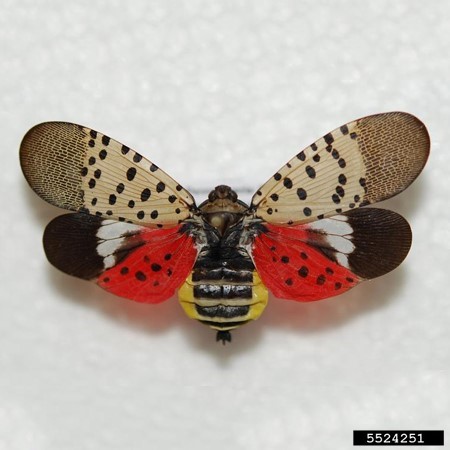Tree of heaven (Ailanthus altissima) is a deciduous tree native to China, Taiwan, and Vietnam. It was brought to the U.S. in the late 1700s as an ornamental shade tree. Today this tree is found in most of the Continental U.S., Hawaii, and Canada. It looks similar to staghorn sumac, ash, and walnut and has a strong, offensive odor that some describe as being similar to rotting peanuts. In 2020, the Minnesota Department of Agriculture changed the regulated noxious weed designation of tree of heaven from Restricted to Prohibited Eradicate, meaning that all tree of heaven plants must be eliminated.
Tree of heaven is fast growing, can reach 90 feet in height, and live 30 to 70 years. This species is highly adaptable and tolerant of disturbance. It is dioecious, meaning there are separate male and female plants. Female plants produce prolific amounts of seed, up to 325,000 seeds per year. Tree of heaven spreads aggressively in response to above-ground cutting or root breaking. Root fragments found in infested soil may start new populations.

Tree of heaven is the preferred host for the invasive spotted lanternfly (Lycorma delicatula). Spotted lanternfly can attack over 65 tree species, including trees grown in Minnesota. Spotted lanternfly was detected in Pennsylvania in 2014 and has spread to surrounding states over the last several years, but it has not been found in Minnesota.

Tree of heaven may play a particularly important role in the spotted lanternfly lifecycle. To date, only two tree of heaven plants have been found in Minnesota, and both populations were eradicated. It is unknown if the absence of tree of heaven will affect the ability of spotted lanternfly to establish in this state. If you suspect that you have found a tree of heaven or spotted lanternfly:
- Note the exact location with address or GPS coordinates.
- If it is possible, take digital photos of the tree – whole plant, rosettes, flowers, and seed stalks – and suspected spotted lanternfly that can be emailed for identification.
- Infestations can be reported to one of two places:
- The Minnesota Department of Agriculture (MDA) by email at arrest.the.pest@state.mn.us or voicemail 1-888-545-6684
- Directly to EDDMapS through the Great Lakes Early Detection Network app on a smartphone or tablet.
To learn more about the MDA’s Noxious and Invasive Weed Program and the Noxious Weed Law and Lists, please visit: www.mda.state.mn.us/weedcontrol
